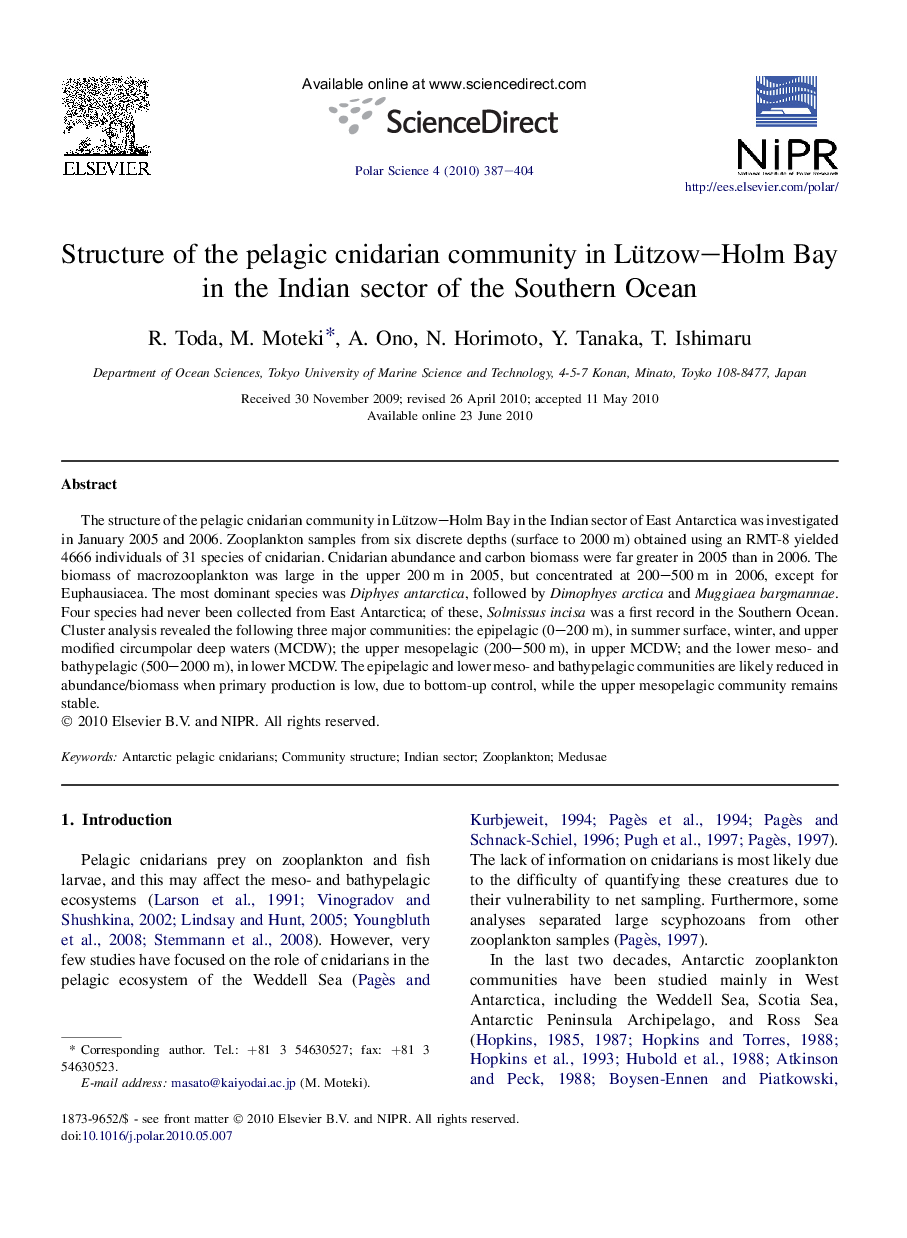| Article ID | Journal | Published Year | Pages | File Type |
|---|---|---|---|---|
| 4683317 | Polar Science | 2010 | 18 Pages |
The structure of the pelagic cnidarian community in Lützow–Holm Bay in the Indian sector of East Antarctica was investigated in January 2005 and 2006. Zooplankton samples from six discrete depths (surface to 2000 m) obtained using an RMT-8 yielded 4666 individuals of 31 species of cnidarian. Cnidarian abundance and carbon biomass were far greater in 2005 than in 2006. The biomass of macrozooplankton was large in the upper 200 m in 2005, but concentrated at 200–500 m in 2006, except for Euphausiacea. The most dominant species was Diphyes antarctica, followed by Dimophyes arctica and Muggiaea bargmannae. Four species had never been collected from East Antarctica; of these, Solmissus incisa was a first record in the Southern Ocean. Cluster analysis revealed the following three major communities: the epipelagic (0–200 m), in summer surface, winter, and upper modified circumpolar deep waters (MCDW); the upper mesopelagic (200–500 m), in upper MCDW; and the lower meso- and bathypelagic (500–2000 m), in lower MCDW. The epipelagic and lower meso- and bathypelagic communities are likely reduced in abundance/biomass when primary production is low, due to bottom-up control, while the upper mesopelagic community remains stable.
